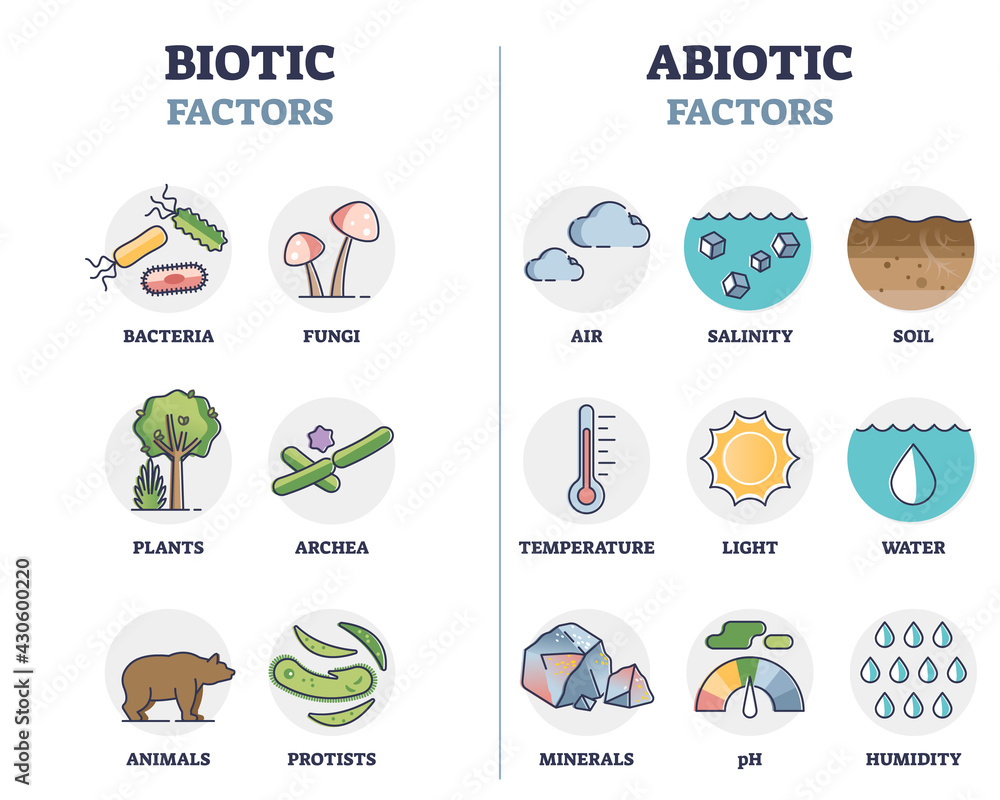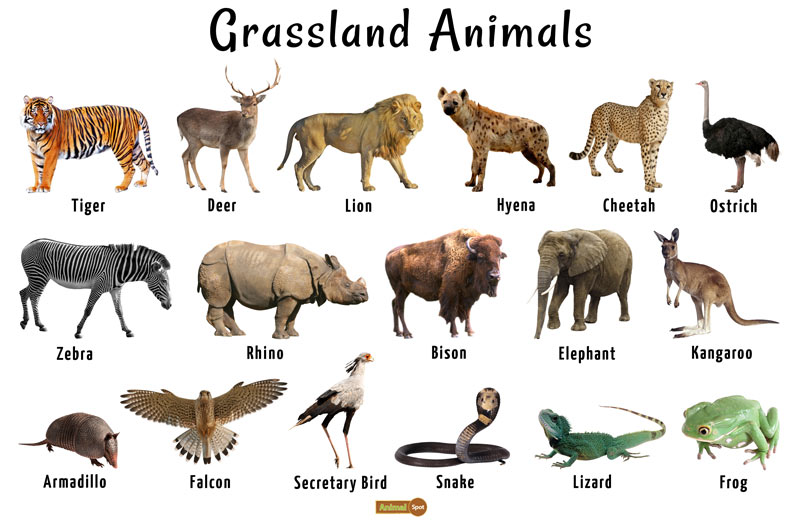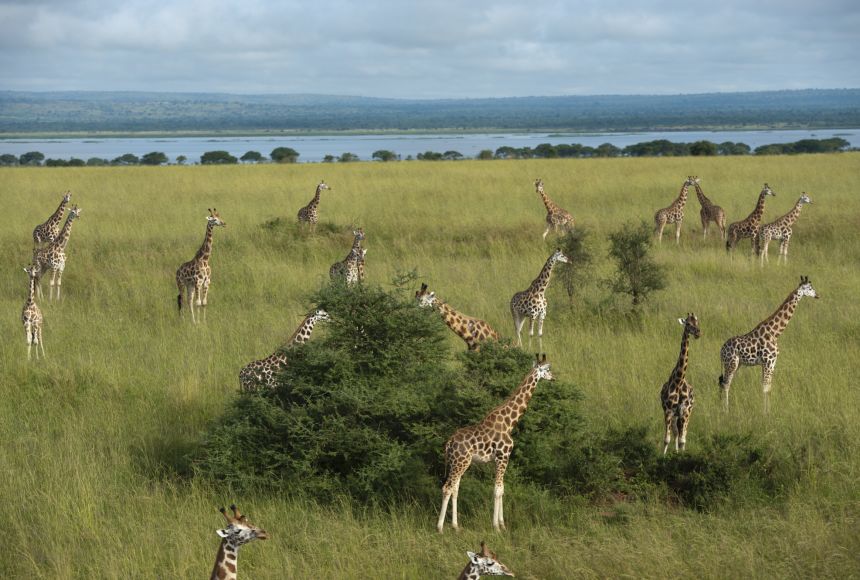Topic abiotic factors in ecosystems: Explore the pivotal role of abiotic factors in ecosystems, which shape biodiversity and influence the survival and distribution of organisms across various habitats.
Table of Content
- What are abiotic factors in ecosystems?
- Understanding Abiotic Factors
- Key Abiotic Factors and Their Roles
- Impact of Temperature on Ecosystems
- Water"s Role in Ecosystem Dynamics
- Light Availability and Photosynthesis
- Soil Composition and Structure
- YOUTUBE: Abiotic Factors in Ecosystems: Water
- Air Quality and Atmospheric Gases
- Salinity in Aquatic Ecosystems
- Wind Effects on Ecosystems
- Human Impact on Abiotic Factors
- Adaptations to Abiotic Conditions
- Monitoring and Managing Abiotic Factors for Conservation
What are abiotic factors in ecosystems?
Abiotic factors in ecosystems refer to the non-living components that shape and influence the environment. These factors play a crucial role in determining the distribution, abundance, and diversity of living organisms within an ecosystem.
Here are some examples of abiotic factors in ecosystems:
- Temperature: The range of temperatures within an ecosystem can affect the metabolism and survival of organisms. Extreme temperatures can limit the distribution of certain species.
- Light: The amount and intensity of sunlight available in an ecosystem impact photosynthesis, which is essential for plant growth. It also influences the behavior and activity patterns of organisms.
- Water availability: The presence of water and its accessibility are vital for the survival of organisms. Different species have varying water requirements and tolerances.
- Soil composition: Soil characteristics such as nutrient content, pH level, and texture influence plant growth and the availability of essential minerals for organisms.
- Atmospheric gases: The concentration of atmospheric gases, such as oxygen and carbon dioxide, can affect respiration, nutrient cycling, and climate patterns within an ecosystem.
- Topography: The physical features of the land, such as elevation, slope, and relief, can influence microclimates and the distribution of organisms.
- Geology: The underlying geological formation affects the availability of minerals and nutrients in an ecosystem, which in turn affects the composition of vegetation and the organisms that rely on it.
It is important to note that these abiotic factors are interconnected and can interact with each other to create complex environmental conditions within an ecosystem. Understanding and studying these factors are crucial for assessing the health and functioning of ecosystems and predicting the effects of environmental changes.
READ MORE:
Understanding Abiotic Factors
Abiotic factors are the non-living elements that play a fundamental role in the environment, affecting the structure and function of ecosystems. These factors include temperature, water, sunlight, wind, pH, and soil composition, each contributing uniquely to the health and diversity of the ecosystem.
- Temperature: Determines the types of organisms that can survive in an environment.
- Water: Essential for life, influencing species distribution and ecosystem productivity.
- Sunlight: Drives photosynthesis, providing energy for plant growth and thus supporting entire food webs.
- Wind: Affects plant morphology, seed dispersal, and microclimate conditions.
- pH Levels: Influences nutrient availability and organism survival in both soil and water ecosystems.
- Soil Composition: Impacts the types of plants that can grow, affecting the entire ecosystem"s structure.
Understanding these abiotic factors is crucial for the conservation and management of ecosystems, as they directly influence the life cycles and habitats of living organisms.

Key Abiotic Factors and Their Roles
The ecosystem"s balance and biodiversity are significantly influenced by various abiotic factors. These non-living components are critical for the survival and thriving of living organisms. Below are the key abiotic factors and their roles in ecosystems:
- Temperature: Acts as a primary determinant of the geographical distribution of organisms. It affects metabolic rates and seasonal migration patterns.
- Light: Provides the energy necessary for photosynthesis in plants, which is the foundation of most food chains.
- Water: A vital resource for all living organisms, influencing their physiological processes and habitat selection.
- Soil: Supports plant life by providing nutrients, water, and a medium for root systems. Its composition and texture influence the types of vegetation that can thrive.
- Wind: Impacts pollination, seed dispersal, and the physical shaping of habitats, thereby affecting ecosystem structure.
- Salinity: Especially important in aquatic ecosystems, salinity levels can determine the species composition of both freshwater and marine environments.
- pH: Affects the chemical makeup of soil and water, influencing nutrient availability and the survival of many species.
These abiotic factors interact with each other and with biotic factors (living components) to create a dynamic and complex ecosystem where life can flourish.
Impact of Temperature on Ecosystems
Temperature is a crucial abiotic factor that significantly influences ecosystems worldwide. It affects the physiological processes of organisms, determines species distribution, and influences ecosystem productivity and biodiversity.
- Regulation of Biological Processes: Temperature influences metabolic rates, growth, and reproduction of organisms. Warmer temperatures can increase these rates up to a point, beyond which organisms may experience stress.
- Species Distribution: Different species are adapted to specific temperature ranges. Shifts in these ranges due to climate change can lead to habitat loss, altered species distribution, and biodiversity changes.
- Ecosystem Productivity: Temperature impacts photosynthesis and decomposition rates, affecting the overall productivity of ecosystems. Warmer temperatures may enhance these processes in some ecosystems, while negatively impacting others.
- Seasonal Changes: Seasonal temperature variations trigger migration, hibernation, and breeding cycles in various species, playing a vital role in the dynamics of food webs and ecosystem functions.
Understanding the impact of temperature on ecosystems is essential for predicting the effects of climate change on biodiversity and ecosystem services, highlighting the need for strategies to mitigate adverse impacts.

Water"s Role in Ecosystem Dynamics
Water is a critical abiotic factor that shapes the vitality of ecosystems. Its presence, distribution, and quality play a pivotal role in determining the types of life forms that can thrive in an environment.
- Hydration: Essential for the survival of all living organisms, water acts as a solvent, transporting nutrients and waste within organisms.
- Habitat: Bodies of water such as rivers, lakes, and oceans serve as habitats for a vast array of species, influencing biodiversity.
- Climate Regulation: Water bodies regulate temperature and climate by absorbing solar heat, influencing weather patterns globally.
- Soil Moisture: Influences plant growth and soil organisms, affecting agricultural productivity and forest ecosystems.
- Chemical Properties: The pH, salinity, and oxygen levels in water affect the species composition in aquatic ecosystems.
Understanding water"s role highlights its importance in conservation efforts, as changes in water availability or quality can have profound effects on ecosystem dynamics.
Light Availability and Photosynthesis
Light availability is a critical abiotic factor that directly influences the process of photosynthesis, the foundational chemical reaction that fuels ecosystem productivity. Sunlight not only drives the growth and health of plants but also impacts the entire food chain.
- Photosynthesis: Plants convert light energy into chemical energy, producing oxygen and organic compounds that serve as the primary energy source for many ecosystems.
- Plant Growth: Light intensity and quality affect plant morphology, flowering time, and biomass production.
- Energy Distribution: The distribution of light in an ecosystem determines the stratification of plant life, influencing which species grow in which layer of an ecosystem.
- Seasonal Changes: Variations in light availability throughout the year can trigger seasonal behaviors in organisms, such as migration and hibernation.
Understanding the role of light in ecosystems is essential for managing natural resources and conserving biodiversity, as it affects the primary productivity upon which all trophic levels depend.

Soil Composition and Structure
Soil composition and structure are pivotal abiotic factors that greatly influence ecosystem dynamics. The physical and chemical properties of soil affect water retention, nutrient availability, and the types of vegetation that can thrive.
- Physical Properties: Includes soil texture (proportions of sand, silt, and clay), which determines porosity and permeability, affecting root penetration and water availability.
- Chemical Properties: Encompass soil pH, nutrient content (nitrogen, phosphorus, potassium), and organic matter levels, which influence plant growth and microbial activity.
- Soil Horizons: Different layers of soil provide distinct habitats for various organisms, with topsoil being the most fertile due to the presence of organic material and microorganisms.
Understanding soil composition and structure is essential for ecosystem management, agriculture, and conservation efforts, as these factors directly impact plant diversity, crop yields, and the overall health of the ecosystem.
Abiotic Factors in Ecosystems: Water
Dive into the mesmerizing world of water! Discover the stunning beauty of the ocean depths, witness the powerful force of waterfalls, and learn about the essential role of water in sustaining life on our planet. This captivating video will leave you in awe of the incredible power and grace of water.
Abiotic Factors in Ecosystems: Soil and Minerals
Get ready to unearth the hidden wonders of soil and minerals! Join us on a fascinating journey as we explore the rich, diverse world beneath our feet. From the intricate web of microscopic organisms that make up healthy soil to the awe-inspiring formations of precious minerals, this video will open your eyes to the hidden treasures of the Earth.
Air Quality and Atmospheric Gases
Air quality and the composition of atmospheric gases are critical abiotic factors that influence ecosystem health and functionality. These elements affect not only the climate but also the respiratory health of living organisms and the process of photosynthesis.
- Oxygen: Essential for respiration in animals and microorganisms, maintaining the vitality of ecosystems.
- Carbon Dioxide: A key component of photosynthesis, influencing plant growth and oxygen production.
- Nitrogen: Vital for plant growth, as it is a major component of chlorophyll and amino acids. Atmospheric nitrogen fixation by bacteria makes nitrogen available to plants.
- Ozone: High in the atmosphere, ozone protects living organisms by filtering harmful ultraviolet radiation. However, near the ground, it can be a harmful pollutant.
Monitoring air quality is crucial for protecting ecosystems, as pollutants like sulfur dioxide, nitrogen oxides, and particulate matter can significantly harm plant life, reduce biodiversity, and alter the chemical balance of habitats.

Salinity in Aquatic Ecosystems
Salinity plays a pivotal role in shaping aquatic ecosystems, influencing the distribution, diversity, and biological processes of aquatic organisms. It affects water density, buoyancy, and the osmotic balance critical for aquatic life.
- Effects on Biodiversity: Species have varying tolerances to salinity levels, which can determine the composition of aquatic communities.
- Osmoregulation: Organisms in different salinity environments have adapted unique mechanisms for maintaining internal water balance.
- Plant Adaptations: Salt-tolerant plants (halophytes) exhibit specialized adaptations to survive in high-salinity conditions.
- Ecosystem Productivity: Salinity influences primary productivity by affecting photosynthesis in aquatic plants and algae.
- Water Movement: Salinity gradients can influence water circulation patterns, affecting nutrient distribution and ecosystem dynamics.
Understanding salinity"s impact is crucial for the conservation of aquatic ecosystems, especially in the face of changing global climates and increasing salinization of freshwater bodies.
Wind Effects on Ecosystems
Wind is a powerful abiotic factor with significant impacts on ecosystem structure and function. It influences pollination, seed dispersal, and the physical shaping of habitats, thereby affecting the distribution and survival of species.
- Pollination: Wind aids in the pollination of many plant species, facilitating the transfer of pollen between plants.
- Seed Dispersal: Wind can transport seeds over long distances, promoting genetic diversity and the colonization of new areas.
- Shaping Vegetation: Persistent winds can lead to the physical shaping of trees and plants, a phenomenon known as wind pruning.
- Microclimate Regulation: Wind plays a crucial role in regulating microclimates within ecosystems by moderating temperatures and humidity levels.
- Erosion and Soil Formation: Wind contributes to soil erosion but also plays a part in the formation of new soil deposits, affecting soil texture and fertility.
Understanding the effects of wind on ecosystems is vital for ecological research, conservation efforts, and the management of natural resources, highlighting the dynamic interplay between abiotic and biotic factors.
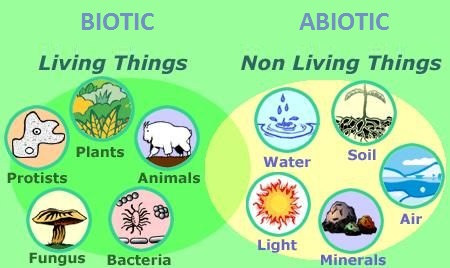
Human Impact on Abiotic Factors
Human activities profoundly affect abiotic factors in ecosystems, influencing climate, water quality, soil health, and atmospheric conditions. Understanding these impacts is crucial for mitigating negative effects and promoting sustainability.
- Climate Change: Emissions from industrial activities and fossil fuel combustion alter atmospheric gases, contributing to global warming and climate variability.
- Water Pollution: Chemical runoff from agriculture and industry contaminates water bodies, affecting their chemical composition and harming aquatic life.
- Soil Degradation: Deforestation, overgrazing, and poor agricultural practices lead to soil erosion, loss of fertility, and desertification.
- Air Quality: Pollution from vehicles, factories, and other sources degrades air quality, impacting human health and the environment.
- Light and Noise Pollution: Excessive artificial light and noise disrupt wildlife behaviors and ecological processes.
By adopting sustainable practices and technologies, humans can reduce their impact on abiotic factors, helping to preserve ecosystem health and biodiversity for future generations.
Adaptations to Abiotic Conditions
Organisms have developed a myriad of adaptations to survive in the diverse abiotic conditions of their ecosystems. These adaptations enable them to thrive in environments with extreme temperatures, varying water availabilities, different light intensities, and other physical and chemical conditions.
- Temperature Adaptations: Species have evolved physiological and behavioral mechanisms to regulate body temperature and survive in extreme heat or cold.
- Water Availability Adaptations: Organisms in arid environments might develop water retention strategies, while aquatic organisms may have osmoregulation mechanisms to deal with varying salinity levels.
- Light Adaptations: Plants have adapted their photosynthesis processes to efficiently capture light, even in low-light environments, through adjustments in leaf size, orientation, and pigment concentration.
- Soil Composition Adaptations: Plants can show specialized root systems for better anchorage and nutrient uptake in various soil types, including those with high salinity or low nutrient levels.
- Wind Adaptations: Many plants and animals have structural adaptations to minimize wind exposure or use wind for dispersal.
These adaptations are crucial for the survival of species, demonstrating the intricate relationship between life forms and their abiotic environment, driving evolution and ecosystem diversity.
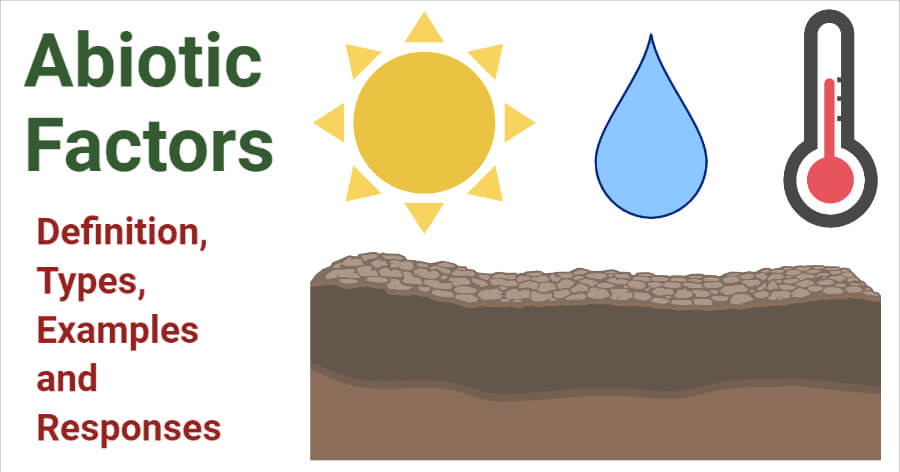
READ MORE:
Monitoring and Managing Abiotic Factors for Conservation
Effective conservation efforts require careful monitoring and management of abiotic factors to maintain healthy ecosystems. Understanding and controlling these factors can help mitigate environmental stressors, promote biodiversity, and ensure the sustainability of habitats.
- Data Collection: Use of advanced technologies such as remote sensing and GIS for gathering accurate data on abiotic factors like temperature, moisture levels, and soil composition.
- Climate Change Mitigation: Strategies to reduce greenhouse gas emissions and enhance carbon sequestration to combat the adverse effects of climate change on ecosystems.
- Water Resource Management: Implementing sustainable water use practices to preserve aquatic ecosystems and ensure the availability of clean water for all organisms.
- Soil Conservation: Techniques such as crop rotation, no-till farming, and reforestation to prevent soil erosion and maintain soil health.
- Pollution Control: Reducing air, water, and soil pollution through stricter regulation of industrial emissions and the use of environmentally friendly technologies.
By proactively monitoring and managing abiotic factors, conservationists can protect ecosystems from degradation, support resilient natural communities, and foster a harmonious relationship between humans and the environment.
Embracing the intricate balance of abiotic factors illuminates the path to sustaining vibrant ecosystems, fostering a deeper appreciation for the dynamic interplay shaping our natural world.

